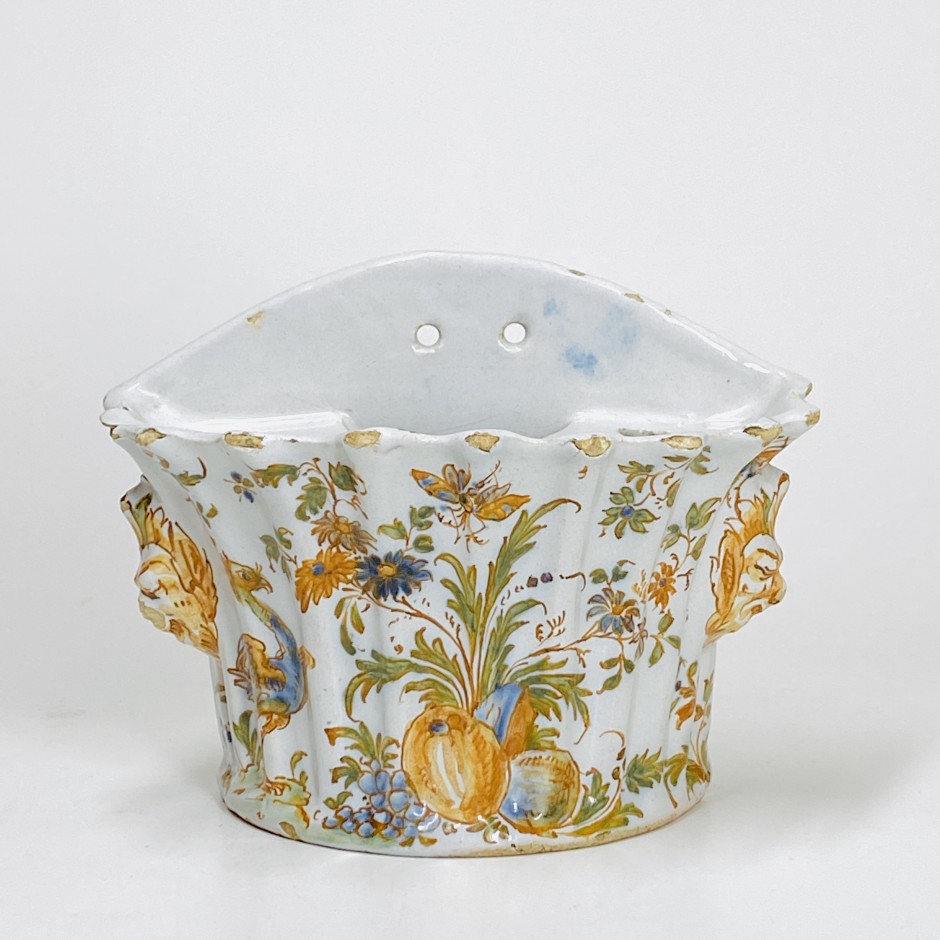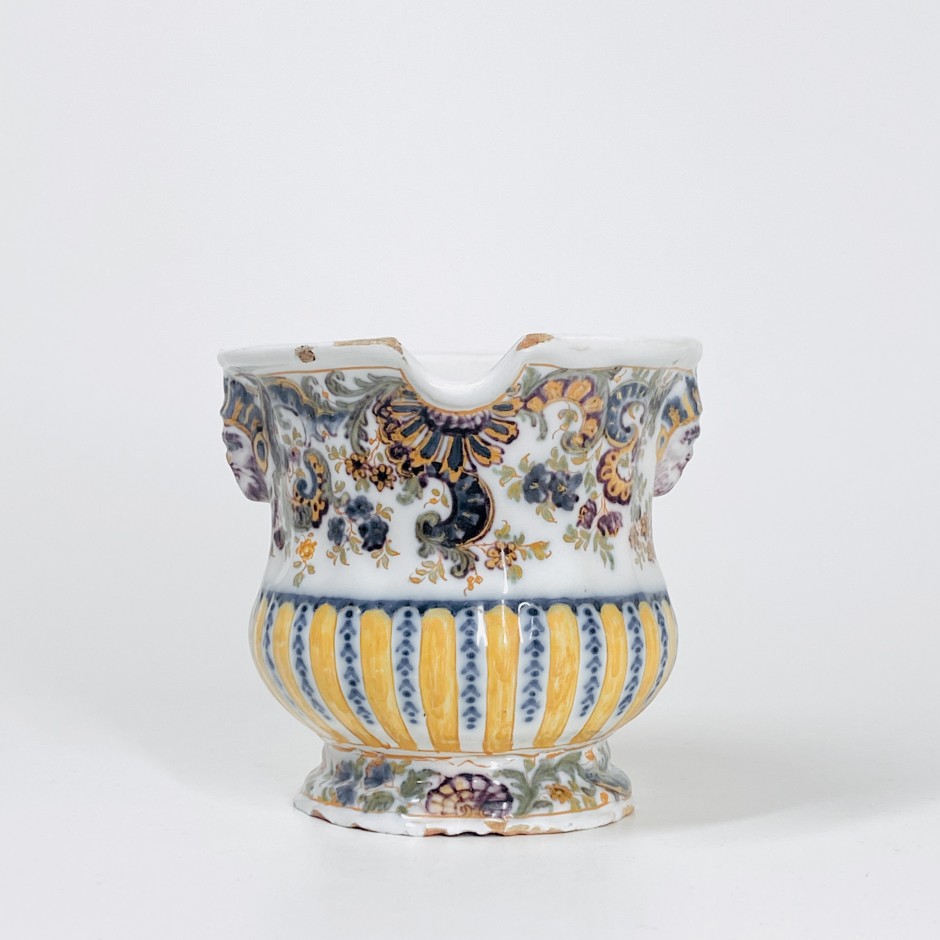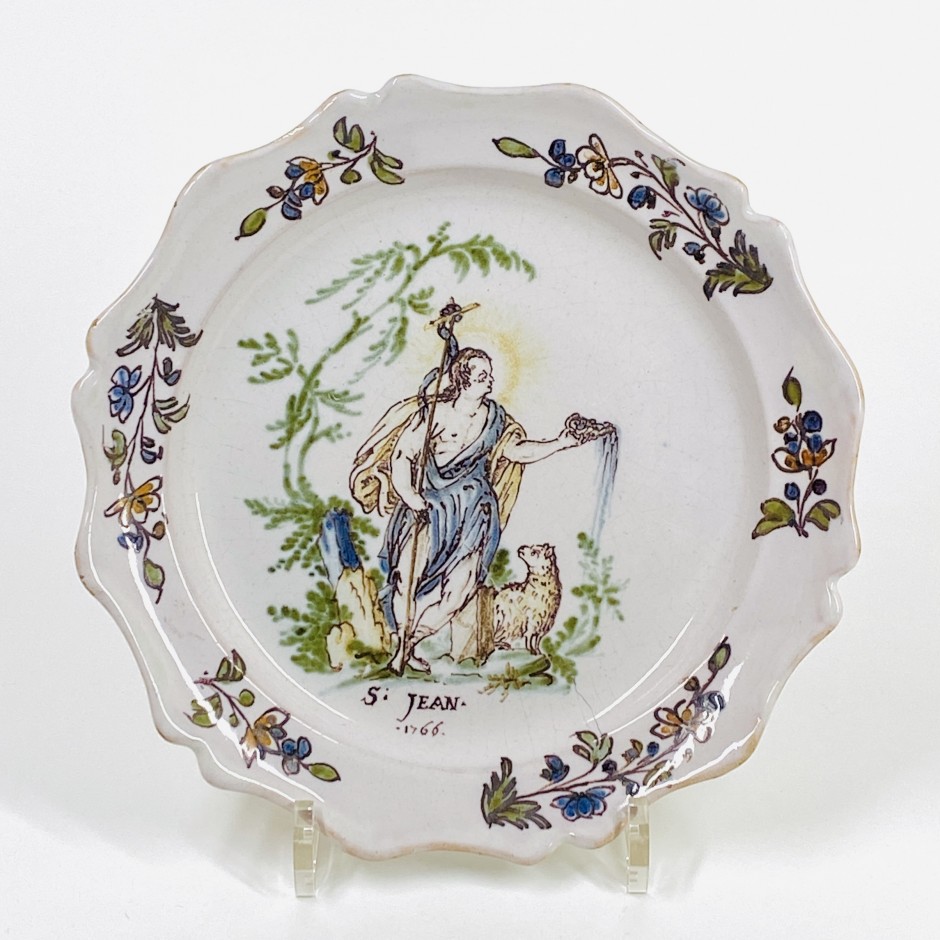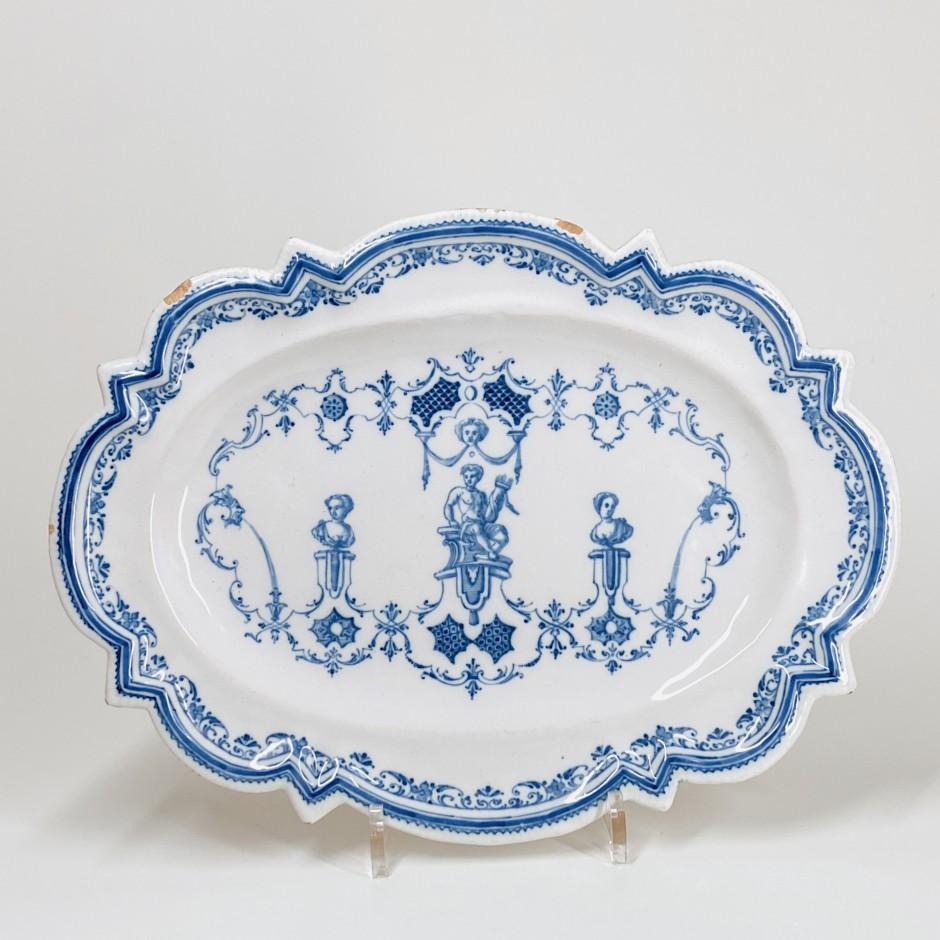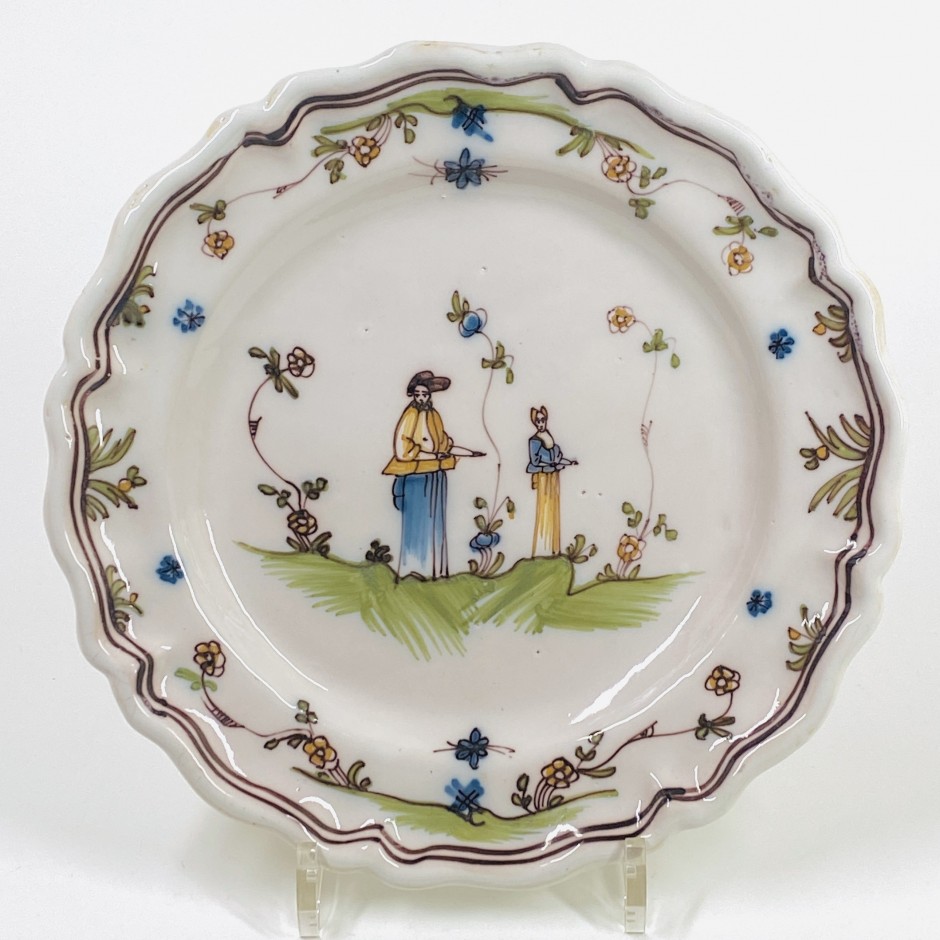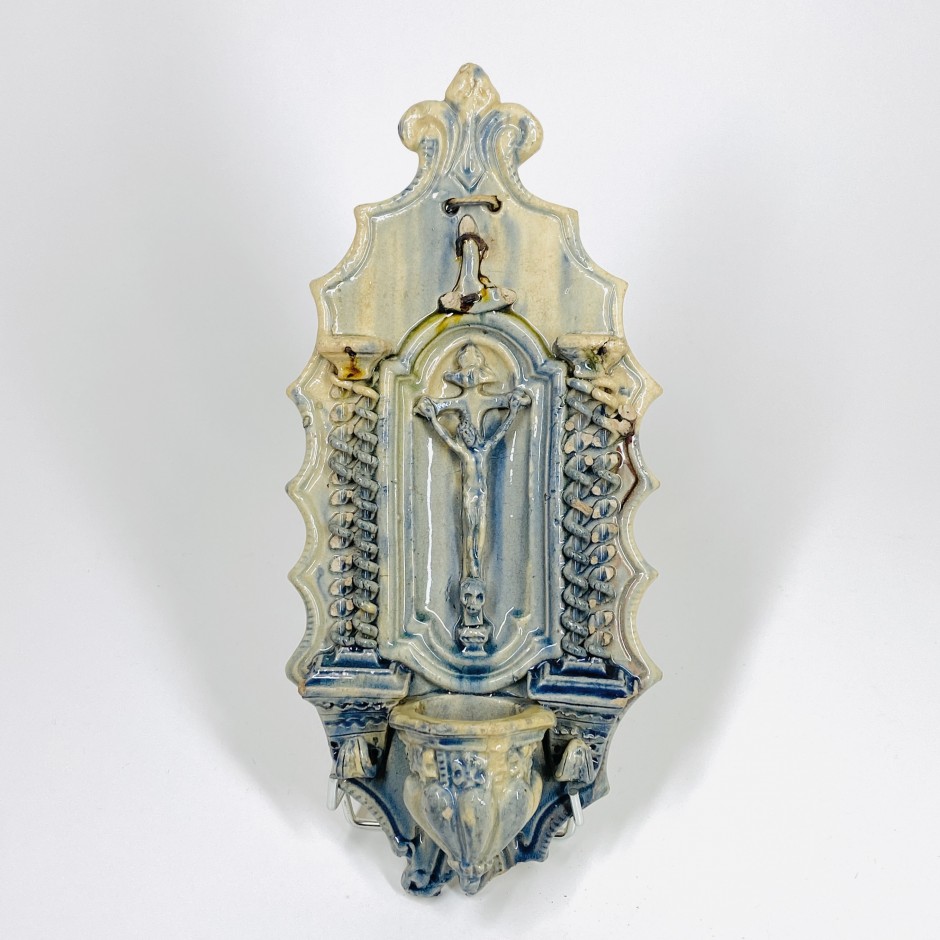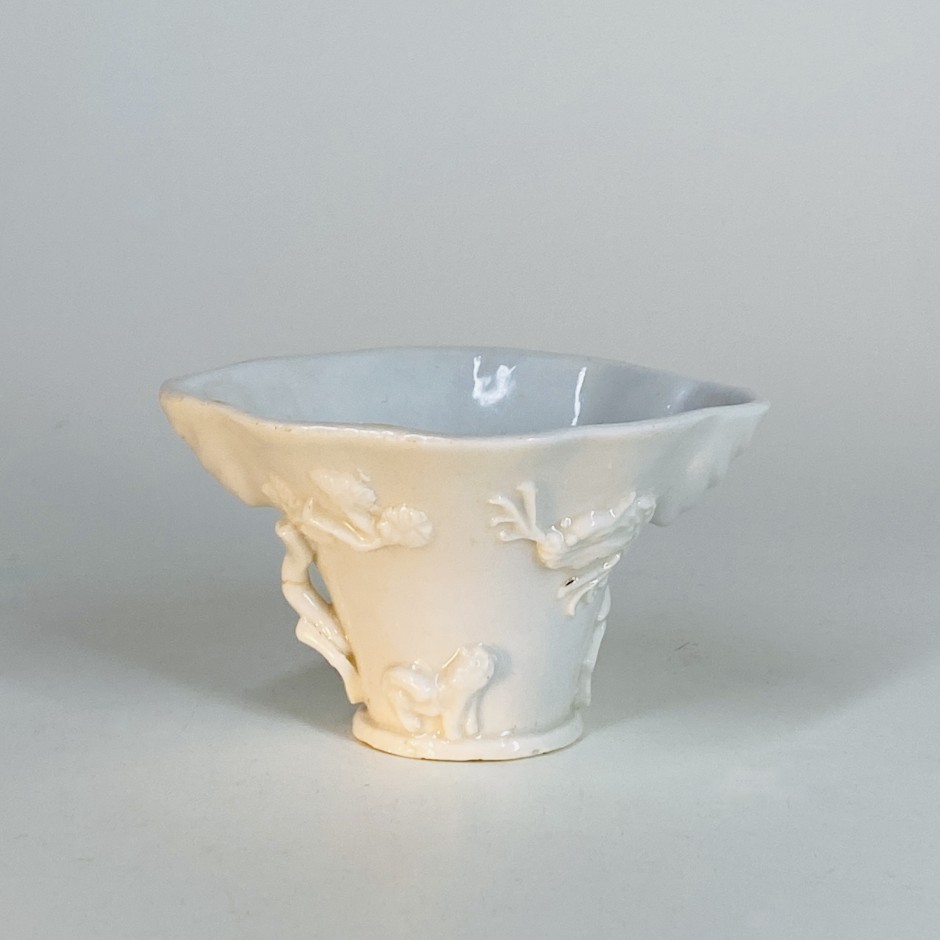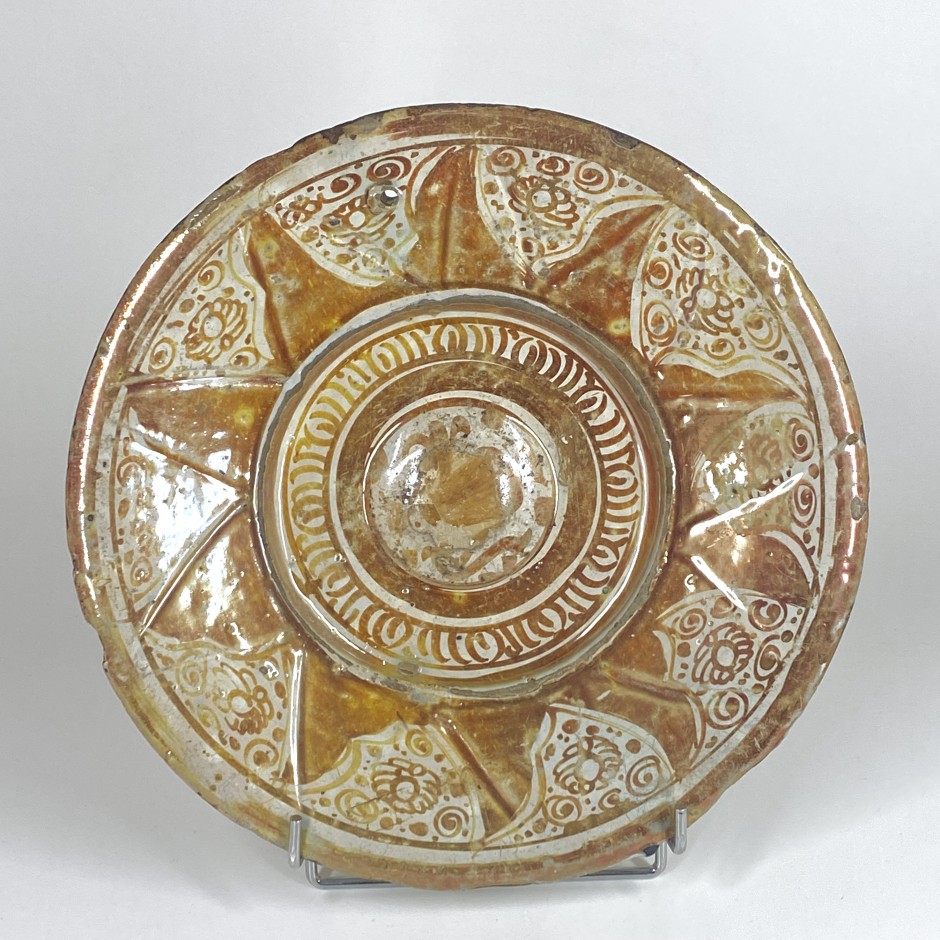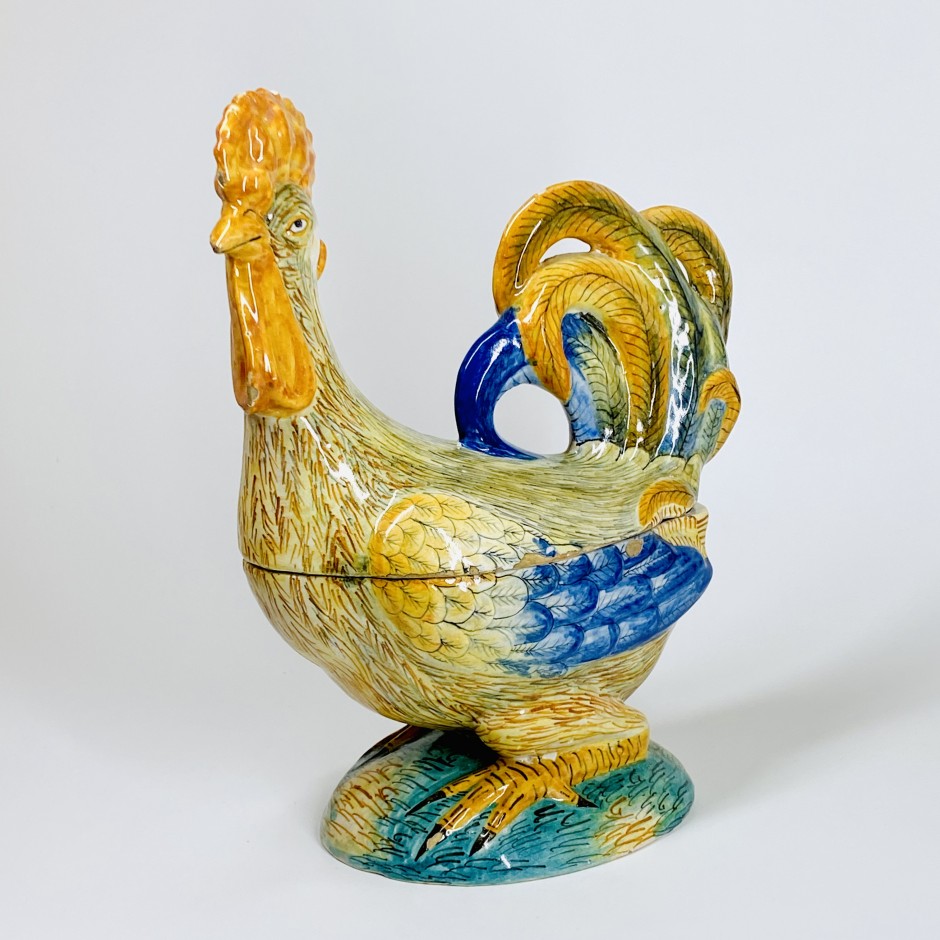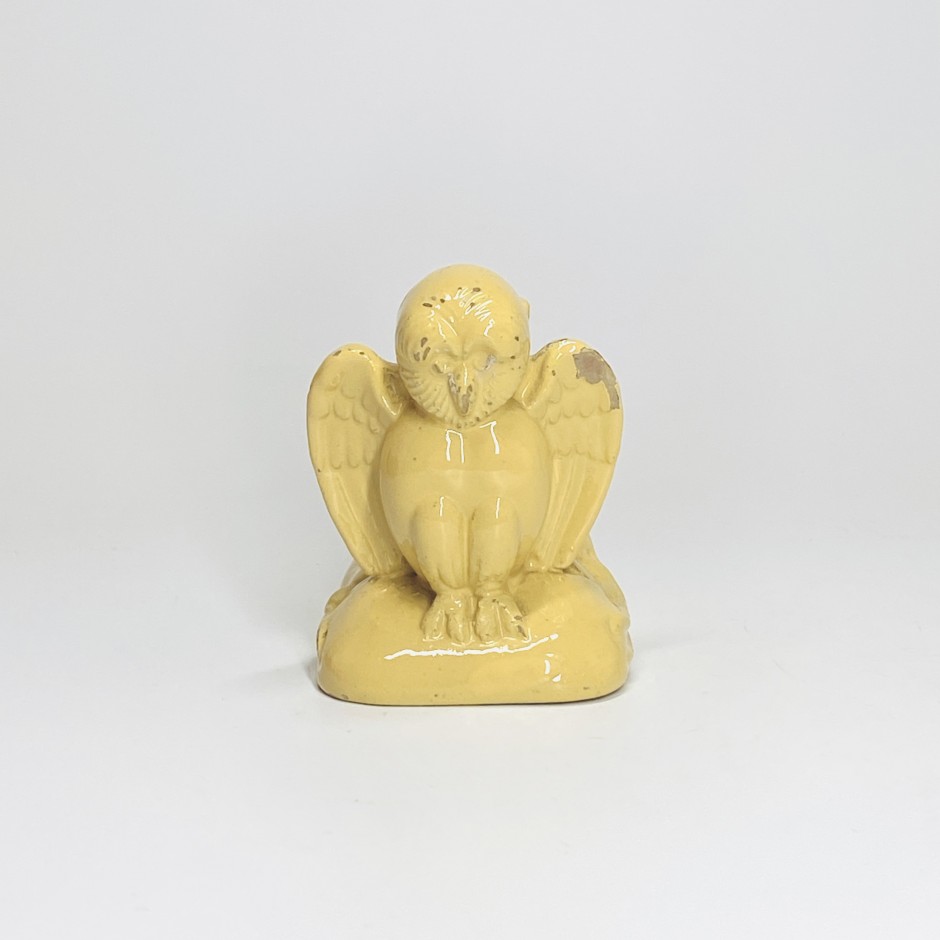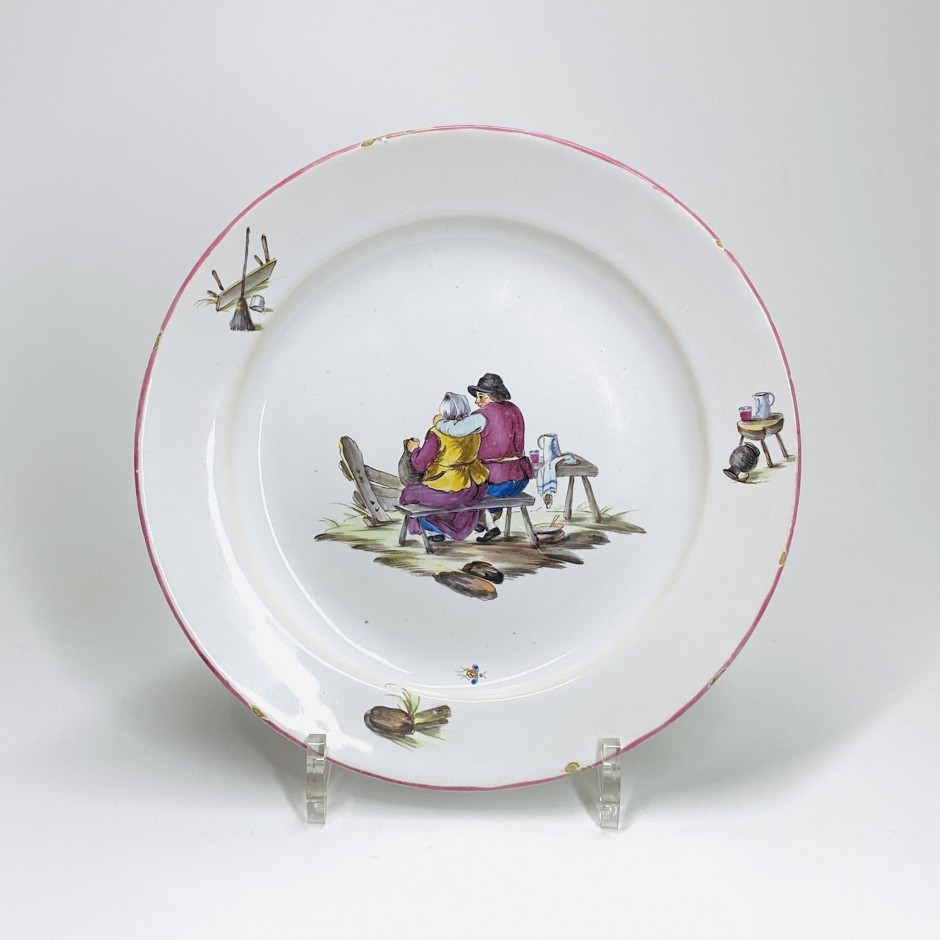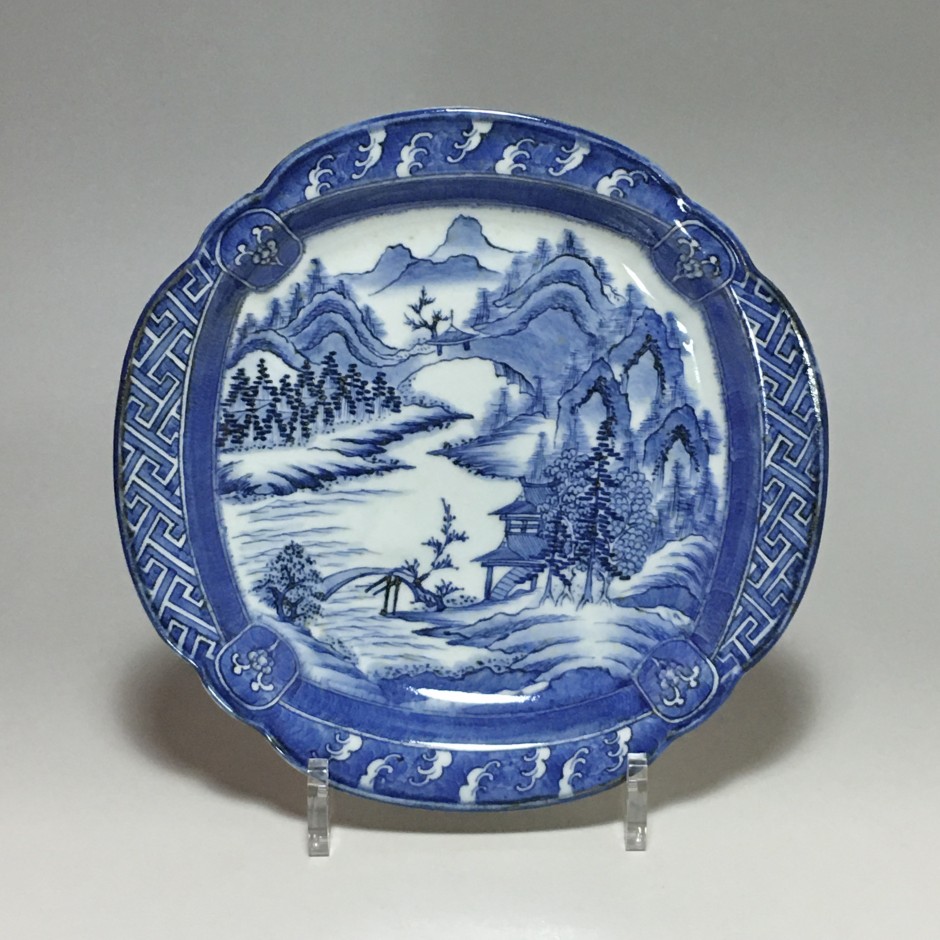-
Lyon Earthenware wall flower vase With Ostrich -...
Beautiful Lyon earthenware wall flower girl with polychrome decoration of pumpkins at the foot of large flowering branches and an ostrich, the handles in the shape of mascarons.Beautiful polychromy - Eighteenth century.
380,00 € -
Marseille earthenware glass cooler - Eighteenth century
Marseille earthenware glass cooler from the Fauchier factory. Shape with yellow gadroons in slight relief, polychrome decoration of rockeries, shells and flowers. rockeries decoration also on the pedestal. Some chips on the edge and at the base (see photos) Eighteenth century. Height: 11.5cm - Diameter: 12cm Additional photos and information on request.
1 250,00 € -
Lyon - Plate depicting Saint John - Eighteenth century
Rare plate with contoured edge in Lyon earthenware with polychrome decoration depicting Saint John in the center with the inscription below: "St Jean. 1766". Border decorated with flowering branches. Bears the inscription on the reverse: "IBC" - 1766 - Eighteenth century
650,00 € -
Lyon - Eight-pointed dish with Bérain decoration -...
Oblong dish in Lyon earthenware with a eight-pointed edge. Decor called "à la Bérain" in blue monochrome representing Apollo holding his quiver in the center framed by two female busts and two masks spitting water, scene surrounded by foliage and arabesques. Embroidery on the wing and blue net - Eighteenth century
650,00 € -
Moncaut earthenware dish - Eighteenth century
Rare Moncaut earthenware dish with polychrome decoration of two figures on a terrace with long flowering stems.
1 250,00 € -
Holy water stoup from Ligron - Eighteenth century
Holy water stoup in glazed earthenware from Ligron enamelled in blue and white. It is decorated with a Christ on the cross. On either side of Christ are two consoles supporting two twisted double columns. Bucket decorated with fleur-de-lys.
380,00 € -
Chinese white libatory cup - Kangxi period (1662-1722)
Libatory cup in the shape of a rhinoceros horn, monochrome “Blanc de Chine” porcelain with molded decoration of animals and branches. China, Dehua Province, Kangxi period (1662-1722)
420,00 € -
Manisès - Hispano-Moorish ceramic dish - Sixteenth /...
Manisès ceramic dish decorated in brown metallic luster on a white background with a pseudo-epigraphic band around of a umbilicus and molded triangles, forming a radiant rosette. Sixteenth / Seventeenth century
1 250,00 €
-
Pesaro (Italy) - Trompe l’oeil terrine - Circa 1800
Pesaro earthenware trompe-l'oeil terrine with polychrome depicting a rooster. Nice model with a successful polychromy. Height 35cm - Length 28.5cm - Around 1800
650,00 € 780,00 €Reduced price! -
Toulouse - Small vase or inkwell in the shape of an...
Small vase or inkwell in the shape of an earthenware owl from Toulouse, wings outstretched, leaning against a tree trunk, with yellow enamel decoration - Nineteenth century
180,00 € 250,00 € -
Earthenware plate from Sceaux decorated with a...
Sceaux earthenware plate with plain edge with polychrome decoration in the center of two “drinkers” seated in the style of Téniers, On the wing, on three terraces drinking glass and pitcher on a stool, upside-down bench and broom - Eighteenth century
120,00 € 180,00 € -
Japanese porcelain plate - Edo period - early...
Porcelain plate of Arita decorated in blue under a lacustrine landscape, pagoda on a mountainous background, border decorated with geometric patterns and waves. Japan, Arita - Edo period. 1804-1817
70,00 € 120,00 €










